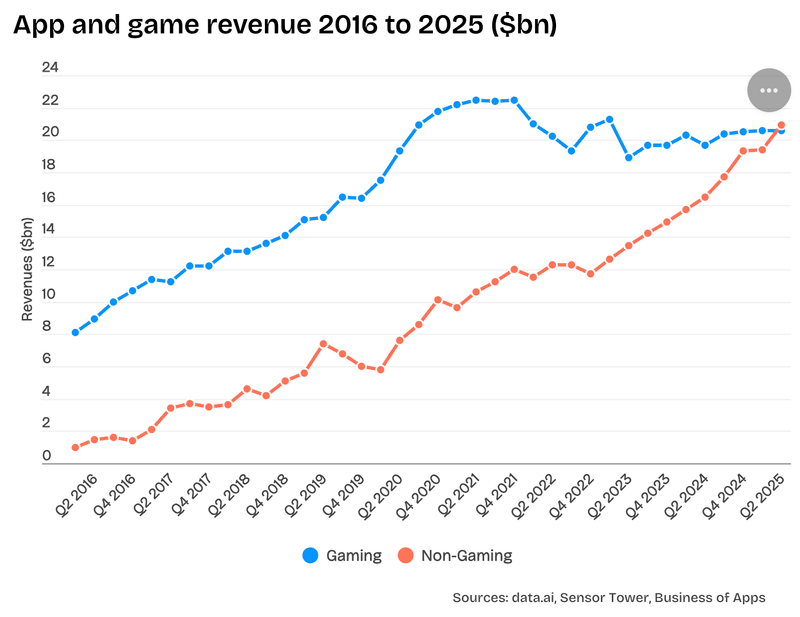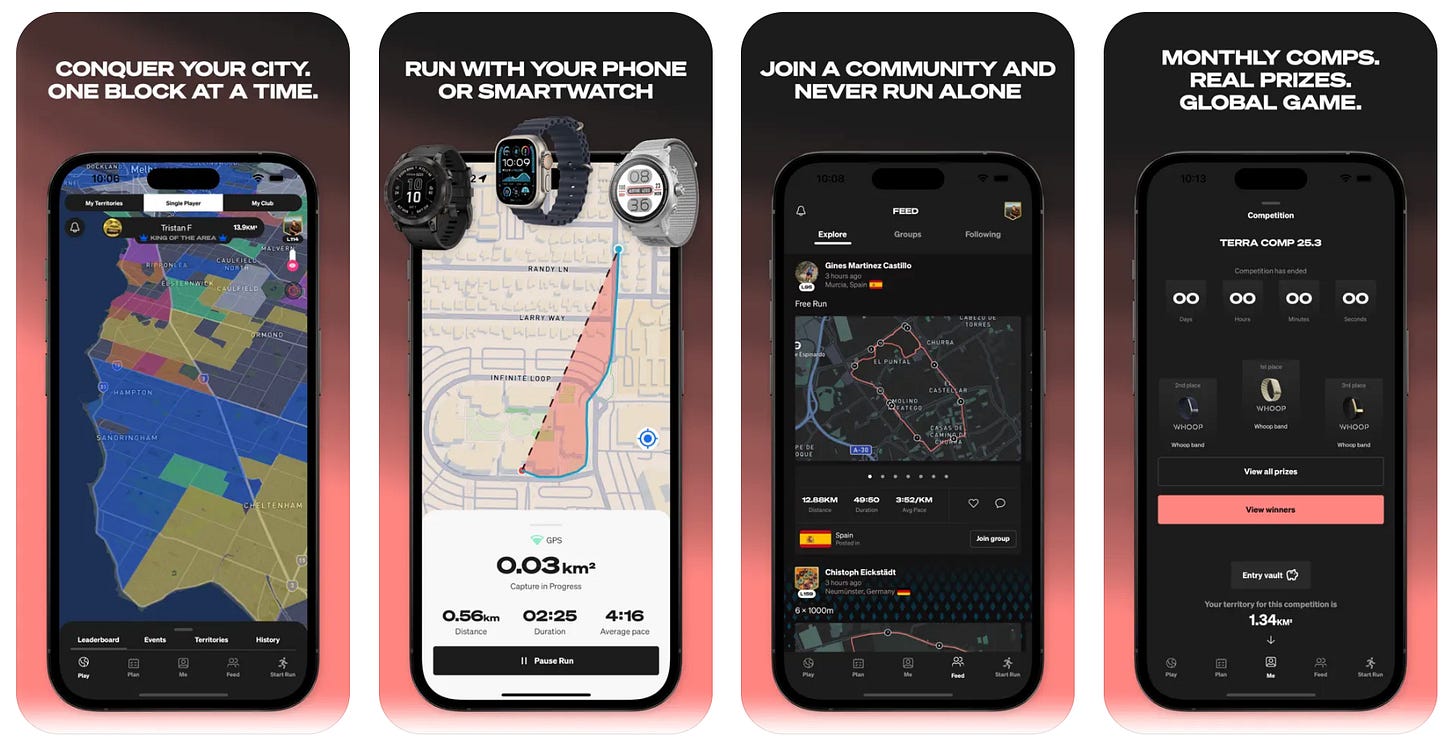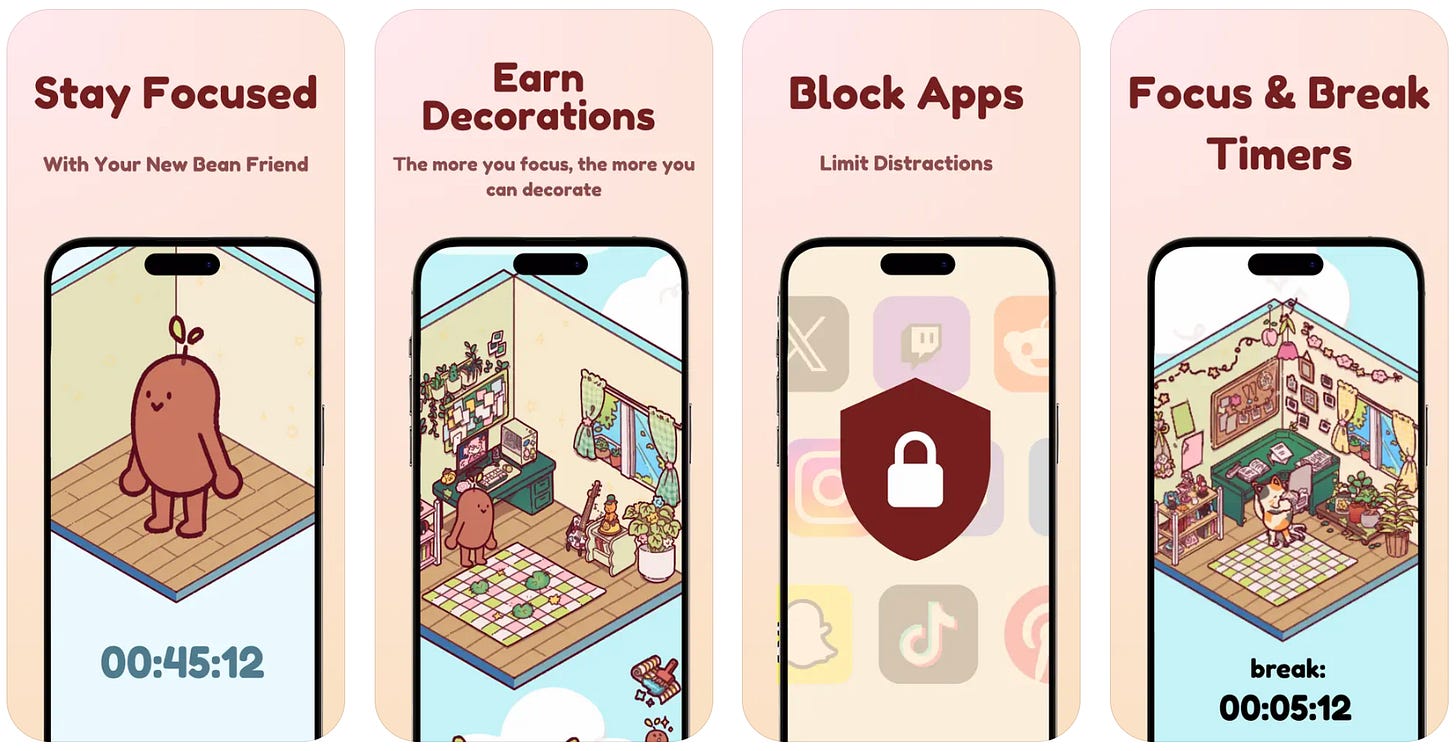Growth Ritual #84
📋 In This Issue:
The Real Winner of the App Store: Is Revenue from Apps Surpassing Games?
A Computer Powered by Brain Cells? Welcome to the Future ✌️ — 🔒
Your Marketing is Wrong. Here's How a Psychologist Would Fix It — 🔒
While Everyone Panics About AI Taking Jobs, Smart Founders are Building These Two Businesses — 🔒
Know someone who’d love this? Invite them and you’ll both win—your friend discovers the newsletter, and you unlock 1 month of premium access.
The Real Winner of the App Store: Is Revenue from Apps Surpassing Games?
As someone who has spent nearly a decade coming up with mobile app ideas, developing them, and making a living by selling them worldwide through app stores using a subscription model (in-app purchase), the graph below is essentially a dream come true for me.
For the first time in history, mobile app revenues are catching up to game revenues…
As you know, Turkey has achieved world-class success and fame in the mobile gaming industry. The story of how this success was written goes back 15 years.
With the launch of the App Store in 2008, the world was introduced to the concept of the “app economy” for the first time.
At that time, two different paths emerged for young, tech-savvy entrepreneurs: some saw the future of mobile in “games”, while others saw it in “apps that offer ease of use”.
During this period, mobile devices were transforming from mere communication tools into personal assistants. The proliferation of the iPhone triggered a design-oriented software culture. People all over the world began to ask, “Is it possible to make life easier with an app?”
In Turkey, this wave of ideas radically changed the entrepreneurial scene in the early 2010s. While teams like Peak Games, Gram Games, Masomo, and Dream Games were working relentlessly to build global mobile gaming businesses, on the other side, app studios like Codeway, HubX, and Madduck were searching for ways to acquire users on the “app” side.
These two directions —games and apps— originated from the same root but required very different skill sets: one emphasized storytelling, analyzing player behavior, and psychology; the other prioritized user experience, data flow, and business model mastery.
I was one of those who chose the app side.
Despite creating apps that topped their categories in America, Japan, and the UK, reaching millions of dollars in annual revenue, we could never achieve the massive, multi-digit revenues seen on the gaming side.
I remember thinking back then, did we choose the wrong path?
As you can see in the graph above, until this year, gamers have overwhelmingly collected more revenue, fame, and glory. That is, until now.
So, you’ve probably guessed that as someone who has poured all their expertise, time, and mind into this field, you’re expecting me to say, “our time has come”.
Not yet.
The Billion-Dollar Blind Spot
We’ve often discussed in this newsletter how statistics that seem to signal the end of AI or that humanity will be left entirely jobless always have another “true” side to them.
Unfortunately, this statistic is also subject to such a clarification.
I say unfortunately because it seems quite possible and logical to think that this market has grown so much due to AI apps, and therefore, as an entrepreneur who has taken all their app studio experience to found a studio focused solely on AI, I should be doing backflips.
The data is correct, but the inference made above is —for now— not.
I imagine that smart young people at the “should I make a game or an app?” crossroads today might look at this graph and conclude that the answer is now “app”.
Looking at the trend, this seems right. But to think that AI is only revolutionizing the app world isn’t quite right. The same revolution is happening in the gaming world, pushing the boundaries of what defines a “game” in areas from storytelling to character design, almost to the point of turning it into real life.
So, we shouldn’t rush to a decision.
There is a huge detail within the data that concerns us small entrepreneurs.
This detail says the following: This explosive growth isn’t happening because thousands of different independent apps are suddenly taking off. This growth comes from the hands of a handful of giants with unimaginable power behind them:
Social Media and Entertainment Giants: TikTok, Disney+, YouTube, HBO Max... These are not just apps; they are extensions of massive media empires. The money they earn from these apps is a drop in the bucket within their much larger business models.
The Power Law is Everything: As the data shows, the top 1% of publishers generate over 90% of all store revenue. So, when you read “consumer apps are winning,” it really means “TikTok is winning.” This revenue has almost no connection to the strategic decisions you make for your habit-tracking or photo-editing app.
Chasing this trend is like opening a neighborhood grocery store and trying to compete with Amazon. You’re not even playing the same game. The numbers are so skewed by these giants that they provide no real signal for developers like us.
The Real App Economy Isn’t Where You Think
So, if the big numbers in the headlines are a lie, where is the truth? It’s hidden in two places that reports conveniently ignore.
1. The “Gamified” App Goldmine:
Reports draw a sharp line between “apps” and “games”, but the smartest entrepreneurs know the real magic lies in this gray area.
For example, what is Duolingo? An “Education” app? In reality, it’s a game as we know it. It has streaks, points, leaderboards, and a reward system designed to be addictive. The same is true for apps like Elevate (Brain Training) or Impulse.
The Tactic: We need to stop thinking within the rigid categories of the App Store. The real opportunity isn’t in making a better “productivity app”; it’s in bringing game mechanics to traditionally boring fields, elevated to a whole new level with the help of AI.
Two Examples:
Instead of making a fitness app, what about an app where you compete with others to conquer territory by running and framing areas in real life, like playing a game of Risk? For example, INTVL.
Instead of a focus app, what about an app where you block time-wasting social media apps and earn virtual decoration items to build your own room the less you use them? For example, Focus Friend.
People are tired of apps that just get a job done. They want interaction. They want to play.
2. Off-Store Revenue & Ads?
The second, and much larger, blind spot is that these revenue figures only track in-app purchases (IAP).
This completely ignores the revenue explosion happening outside the App Store’s walls:
In-app advertising: Still a massive source of income, especially for games.
E-commerce and Physical Products: Think of transportation and delivery apps.
Web-Based Subscriptions: Major players like Netflix, Noom, and even dating apps direct users to sign up via the web to bypass Apple’s and Google’s commissions.
This off-store movement is where fortunes are being quietly made. The smartest developers use their apps not as the entire business but as the entry point (the top of the funnel) to a much larger ecosystem they control.
Your Action Plan
Let’s set aside the big headlines, the statistics, and the trends. For creators like us, they don’t offer real strategic intelligence. The “apps vs. games” turning point is a shiny metric that tells us very little about what to do next.
Instead, let’s ask ourselves these two questions:
How can I apply game mechanics to my own field? What if my app felt less like a tool and more like a game?
How would my business model work outside of the App Store? Could I use my app to drive traffic to a web-based community, a valuable course, or a physical product?
What if our next venture wasn’t just another ordinary subscription app picking up the crumbs left behind by the giants, but a “gamified” experience that builds a direct, off-store relationship with its users?






